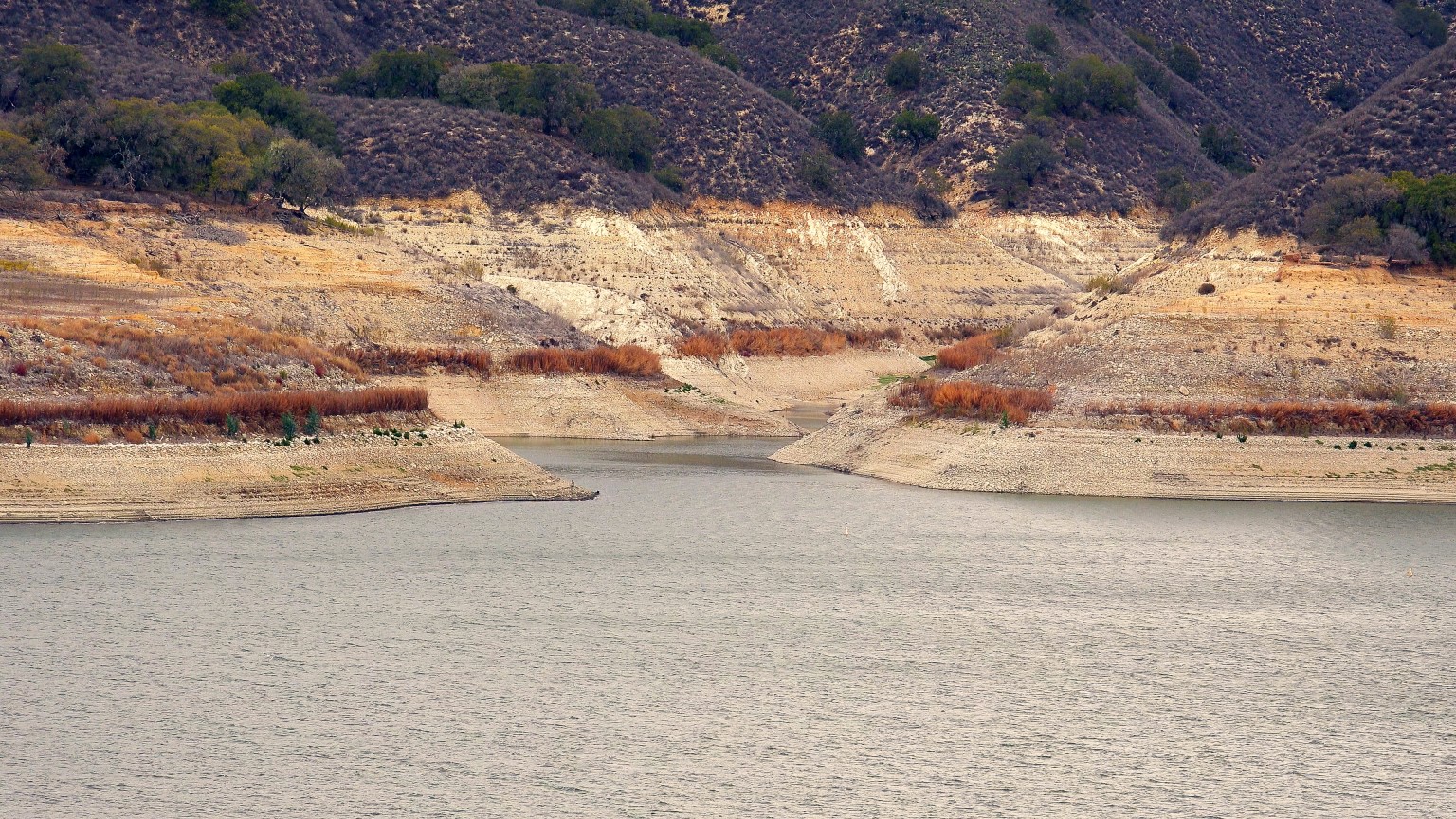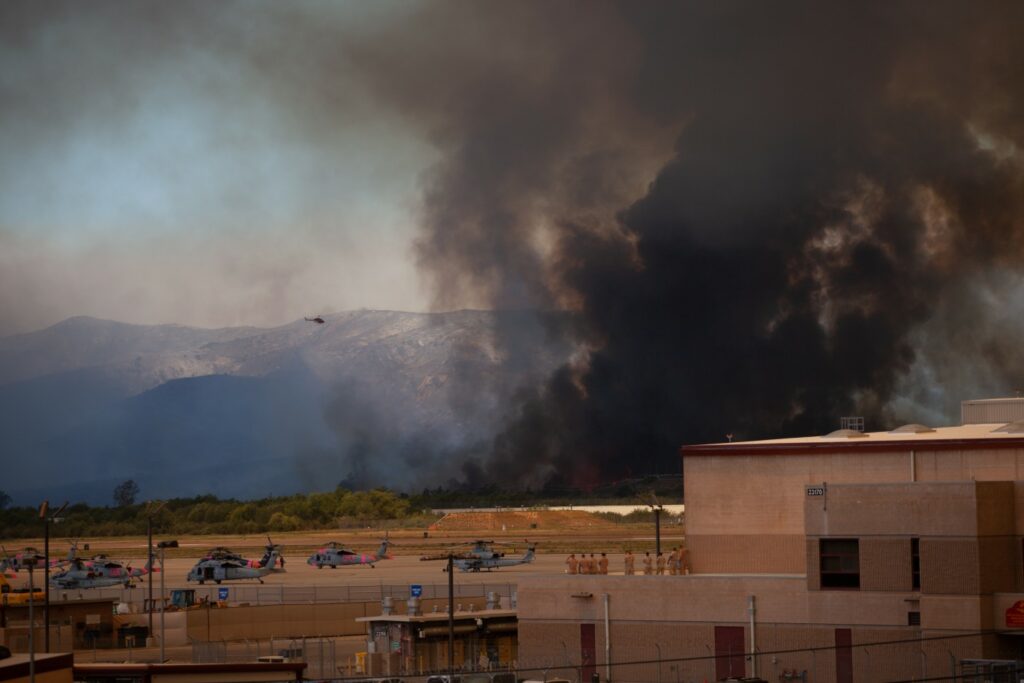
Heavy Rain, Flooding, and Chance of Severe Weather Staring Down the Southern U.S.
January 22, 2024
Posted: April 30, 2022 4:02 am





Dry and Hot Conditions Continue in Southwest, Posing Wildfire Danger
Approximately 6 million residents of Southern California are now under water usage restrictions as the state continues to deal with an ongoing drought. These restrictions were announced as the dry and warm weather is forecast to stick around for the Southwest.
The Metropolitan Water District (MWD) of Southern California recently took the step of declaring a water shortage emergency, triggering the implementation of an emergency water conservation program. For the first time in history, residents and businesses throughout some areas of Los Angeles, San Bernardino, and Ventura counties are mandated to decrease their use of water by 20-30%. As part of the restrictions, residents will only be able to water their lawns one day per week.
While the restrictions were approved on Tuesday, they will not go into effect until June 1. There will be hefty fines imposed on those who defy the restrictions.
The restrictions are being blamed on the record-breaking drought that has encompassed the Golden State. The drought has caused water levels in the state’s primary reservoirs to plummet to historic levels, according to the California Department of Water Resources.
The dry weather of January, February, and March only served to exacerbate the dire situation. What is most worrisome to officials is that the window is closing for any meaningful precipitation to fall heading into the dry season. The months between December and March is typically when California receives the bulk of its precipitation, carrying it through the lean summer months.
There is no part of California that has been untouched by the ongoing drought. According to the U.S. Drought Monitor, over 95% of the state is under the designation of either a severe to extreme category. This figure marks a jump of almost 30% when compared to the middle of January. Although the state experienced an unusually wet December, hopes of erasing the drought were erased when the moisture suddenly stopped flowing in January.
For example, although downtown Los Angeles averages over 9 inches of rain between the beginning of January and the end of March, the area only recorded 1.66 inches of rain during this period this year, translating to 18% of its average. San Diego only measured 44% of its average rainfall during this time period, not faring much better. While the situation was slightly better in the northern tier of the state, most areas were still far below the average rainfall amounts heading into the summer season.
It was the same situation with a lack of snow in the higher terrains of California. A massive 17 feet of snow was measured in December at Berkeley’s Central Sierra Snow Laboratory at the University of California, marking the snowiest December there on record. However, the conditions quickly dried up with January through March coming in as the driest period in that range in over 100 years.
As a result of the dry winter, the overall snowpack of the Sierra Nevada came in at just 38% of normal. The measurements are even worse at Phillips Station, located south of Lake Tahoe. The snow depth at this measuring station was 2.5 inches on April 1, compared to an average of 66.5 inches on this date in history.
This snowpack delivers about 30% of California’s water for the year as it melts and flows into the state’s reservoirs. It is easy to see how this drastic decrease in snowpack levels will impact the state’s water reserves for the entirety of the year.

California is not the only part of the West Coast dealing with the debilitating drought conditions. It feels as if the calendar has flipped to summer throughout the Desert Southwest. This is not good news for a corner of the U.S. that is already dealing with wildfires.
Nearly all of the Southwest is under a drought designation with the worst of conditions happening in New Mexico and in western Texas. This week has been particularly dangerous as high winds whipped up existing wildfires.
The Tunnel Fire burning just to the northeast of Flagstaff, Arizona has now burned about 20,000 acres. The good news is that fire crews were able to finally get a handle on it over the last few days, bringing the containment to around 90% as of Friday.
Also in Arizona, the Crooks Fire is burning in the Bradshaw Mountains near Prescott. This blaze has scorched over 9,000 acres and is only about 30% contained. Even more fires are burning in the panhandle of Texas.
The promising forecast for Texas is that a disturbance in the jet stream may bring heavy rain to the panhandle region by Sunday. However, while this rain will be beneficial in quelling the fires, the chance of severe weather will also raise the risk of thunderstorms igniting more wildfires through lightning strikes.
Farther to the west, a decrease in wind speeds over the weekend may help to extinguish the fires burning in Arizona.
Did you find this content useful? Feel free to bookmark or to post to your timeline for reference later!

January 21, 2024

January 19, 2024

January 18, 2024